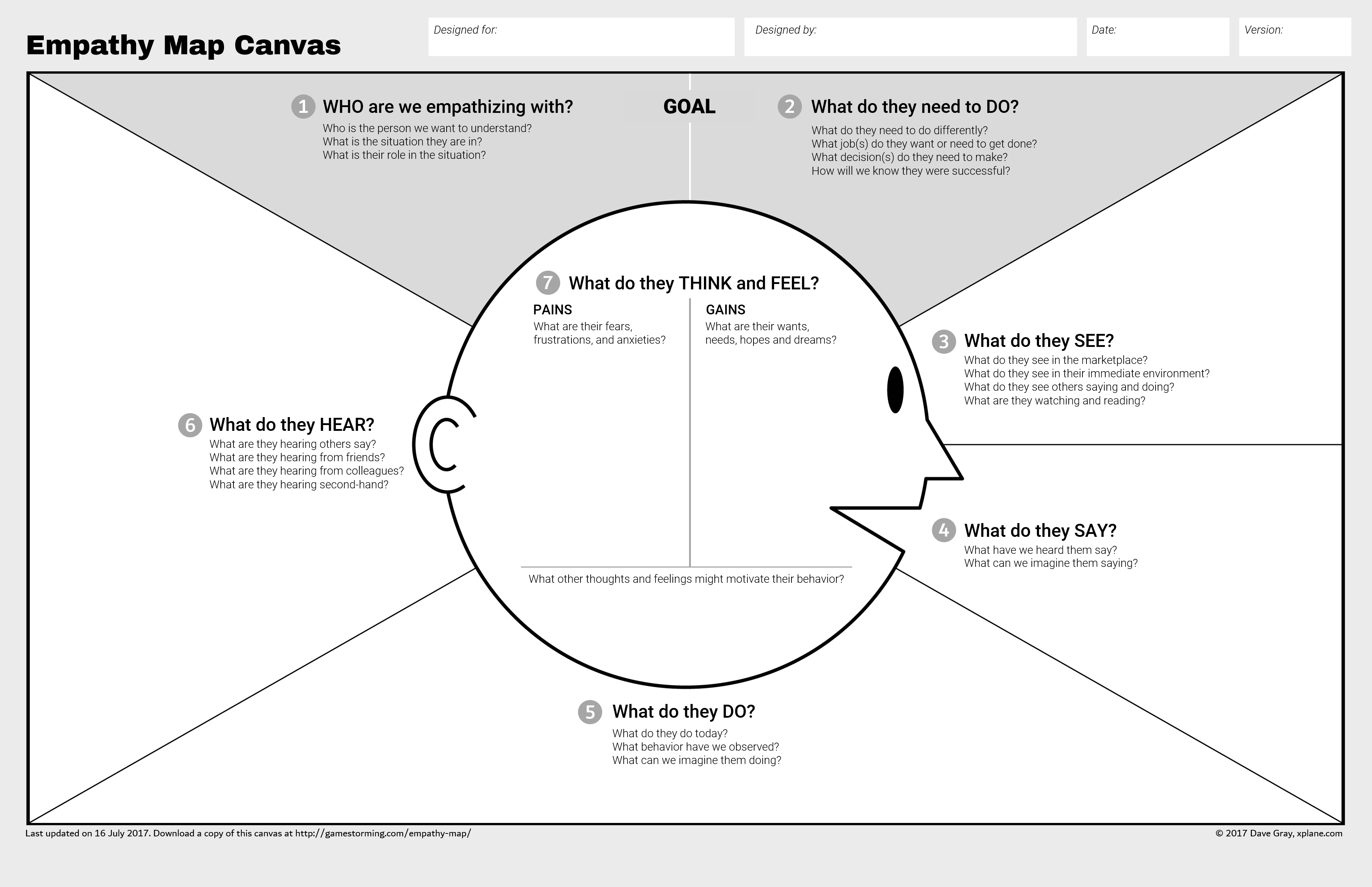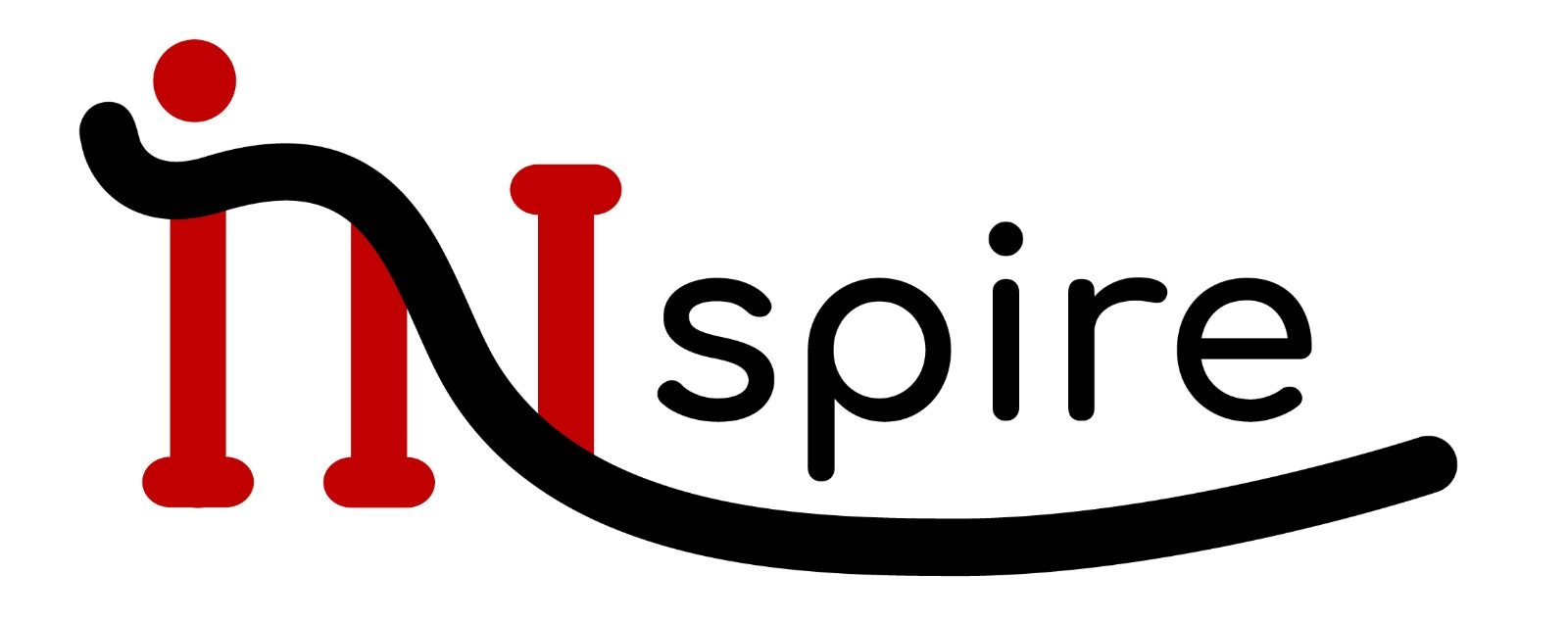Experiment with how to get to know your target group.
Materials: empathy maps handouts, papers, and pen for every player.
Playing time: approx 1 hour + reflection
Number of players: up to 20 for effective reflection
Phase 1 – Group division
10 min.
Any possible game which allows players to divide into smaller groups based on a key attribute. I.e.:
- Next activity is silent. You cannot talk.
- Make a line based on the sizes from tallest to smallest.
- Make a line based on the color of your eyes from brightest to darkest.
- Group up based on
- age.
- employed/unemployed/students/freelancers
In the end of the activity, there should be small groups (can be uneven numbers) which are connected by any strong element based on your needs. In might be useful to divide them based on the challenges they are facing (i.e. low income, unemployed, burn-out, etc.).
Phase 2 – Empathy maps
10 min.
Every player gets an empathy map canvas, paper, and pen.
Facilitator explains the purpose of Empathy map (it is also possible to keep it at the end of activity). Here is more info on empathy maps.

Phase 3 – questions
10 min x number of groups
You can create a flipchart with instructions.
- Group A goes to the center.
- Remaining groups have 10 minutes to ask questions in order to fill their Empathy maps.
- Group has 5 minutes to create a common empathy map for a group A.
- The groups switches, process continues from 1.
Variant
Instead of group agreeing on a common empathy map, it can continue as an individual process. Then, don’t give 5 min to agree on things, but when all groups exchange, give to players 10 extra min to walk individually around and ask extra questions to the people they want to.
Phase 4 – Comparison
15 min
Each group reads definition of the other groups. The targeted group have a chance to comment.
Reflection
- Feelings. How was it for you to ask questions? How was it to listen to the “definition of you”? (meaning, the target group you belong to).
- What happened. What was easy/hard for you?
- Take-away. Did you learn something during the process?
Discussion
- What are strong and weak points of empathy maps?
- What other methods of getting to know the target group you know?
- What challenges do you face when getting to know your target group?
